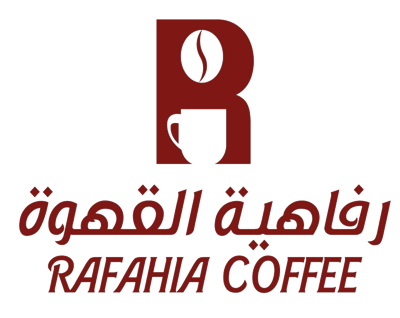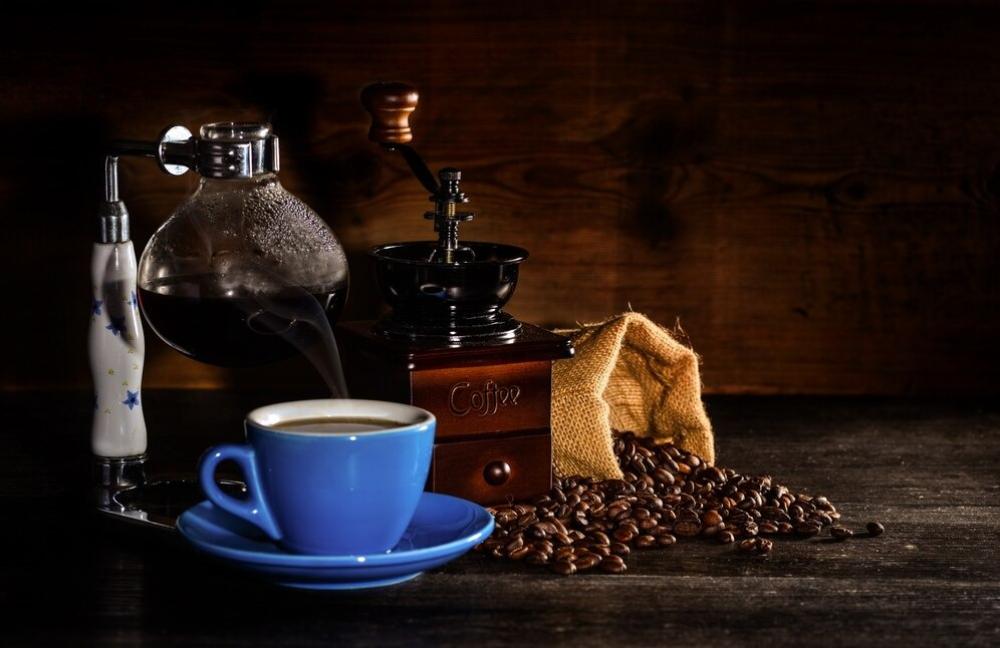Learn how to brew the perfect cup of coffee with the coffee experts at the World of Luxury Store. Brewing the perfect cup of coffee is an art and a science that requires a lot of precision and skill. Brewing methods can range from filter coffee to espresso, with each method requiring specific steps to achieve a unique and distinctive flavor. From choosing the right types of coffee and grinding them correctly, to water temperature and brewing time, all of these factors play a crucial role in achieving a delicious cup of coffee. In this article, we will explore the stages of brewing the perfect cup of coffee and how to achieve the perfect balance between ingredients for an unforgettable experience of the flavor and aroma of excellent coffee.
Article Contents:
How to Make the Perfect Cup of Coffee
How many spoons of coffee do you need per cup?
How to prepare regular coffee
How to prepare the most delicious cup of specialty coffee
Types of coffee used in making coffee
Arabica coffee
Robusta coffee
Liberica coffee
Excelsa coffee
What is the importance of roasting in developing the flavour of coffee?
Which is better for making coffee, fine or coarse grinding?
The most delicious cup of coffee with the Rafaha Coffee Shop
How to Make the Perfect Cup of Coffee
To prepare the perfect cup of coffee, you can follow these steps:
1. Choosing the right coffee:
- Choose a high-quality coffee that suits your taste, whether it is Arabica, Robusta, or a blend of both. Make sure the coffee has been roasted properly and recently.
2. Grind properly:
- Use a coffee grinder to grind the coffee evenly and appropriately depending on your preferred brewing method. The grind can be coarse for filter coffee and finer for espresso.
3. Use pure water at the appropriate temperature:
- Use fresh, pure water, at a temperature between 90-96°C (195-205°F). This helps extract the good flavours from the coffee without damaging it.
4. Coffee to water ratio:
- Use an appropriate ratio of coffee to water depending on the brewing method you choose. The ratio is usually 1:15 to 1:18, which means 1 part coffee to 15-18 parts water.
5. Preparation method:
- Choose your preferred method of preparing coffee, whether it is filter coffee, espresso, presentation, or other. Each method has its own impact on the final flavor of the coffee.
6. Fermentation time:
- Be sure to monitor the brewing time. The brewing time depends on the preparation method and the type of coffee used. The brewing time for espresso is usually very short (around 25-30 seconds) while it may be longer for filter coffee (from 2 to 4 minutes).
7. Present and enjoy:
- Once the coffee is extracted, serve it immediately to enjoy its best flavor and aroma. Enjoy the perfect cup of coffee slowly to enjoy every part of the flavor experience.
Read also: Which is better, Colombian coffee or Ethiopian coffee?
How many spoons of coffee do you need per cup?
A common ratio for brewing a cup of coffee according to general standards is about 10 grams of ground coffee per cup of coffee. This equates to about one to two tablespoons of ground coffee per cup. However, this can vary based on personal taste preferences and the brewing method used. For example, in espresso, you may only need about 7-9 grams of ground coffee per cup, while in filter coffee you may use a little more. So, it’s best to experiment and adjust the amount of coffee according to your taste preference until you get the perfect result for you.
How to prepare regular coffee
Here are the steps to prepare regular coffee (filter coffee) in a simple and easy way:
the components:
- Ground coffee (suitable for filter coffee)
- Water
- Coffee filter
- Coffee grinder (optional to grind coffee if it is not ground)
Steps:
1. Prepare water:
- Boil water in a kettle or jug. It is best to use fresh, pure water for the best coffee flavor.
2. Grinding coffee:
- If the coffee is not pre-ground, use a coffee grinder to grind the coffee to a medium to coarse grind, depending on the type of filter used.
3. Preparing the filter and coffee:
- Place the coffee filter in its place inside the coffee maker (strainer).
- Put ground coffee in the filter, about 1-2 tablespoons for each cup of coffee you want to prepare.
4. Hot water purification:
- Slowly pour hot water over the coffee grounds in the filter. You can use the amount of water calculated based on the number of cups you want to prepare.
5. Start preparing:
- After pouring the water, wait a moment for the coffee to start steeping and extracting.
- Allow the water to gradually filter through the coffee grounds. This should be a slow and even process.
6. Collecting coffee:
- Once the water has drained from the filter and the coffee has been extracted, remove the filter and discard the used coffee.
7. Serving coffee:
Pour the coffee into serving cups, and you can add milk or sugar to taste.
With these steps, you can prepare delicious and balanced filter coffee. Taste the coffee and enjoy your daily cup with ease and simplicity.
How to prepare a cup of specialty coffee
To prepare the most delicious cup of specialty coffee, you can follow the following steps using the espresso preparation method, which is one of the famous methods in the world of specialty coffee:
1. Choosing the right coffee:
- Choose a high-quality, espresso-friendly coffee, such as Arabica or a blend of Arabica and Robusta if you prefer a stronger flavor.
2. Grind the coffee finely:
- Use a coffee grinder with a fine grind. The grind should be fine to medium fine, similar to that of fine sugar.
3. Equipment heating:
- Preheat your espresso machine and coffee cup with hot water before you start brewing. This helps prevent excess heat loss during coffee extraction.
4. Pack coffee in the mission (Portafilter):
- Fill the task with ground coffee evenly and compactly using a coffee tamper. The pressure should be medium to firm to ensure even and efficient extraction of the coffee.
5. Espresso extraction:
- Start the espresso extraction by pressing the start button or by activating the task. The ideal extraction time for espresso is usually between 25 and 30 seconds for 30 ml of coffee.
6. Final distillation:
- After extracting the espresso, the coffee should come out with a dark brown crema. This is a sign of good coffee extraction.
7. Tasting and serving coffee:
- Taste the coffee immediately to enjoy its best flavor. You can serve it as is or use it as a base for other coffee drinks such as cappuccino or latte.
Read also: What is specialty coffee and how to prepare it?
Types of coffee used in making coffee
There are several main types of coffee beans used to make coffee, and each type has its own unique characteristics that affect the flavor and texture of the coffee. Some of the popular types include:
1. Arabica coffee:
Arabica coffee is the most common and widely grown type worldwide.
- It has a smooth and balanced flavour, with a pleasant presence of acidity.
Arabica coffee is grown in high-altitude areas, such as the mountains of Central and South America, and East Africa.
2. Robusta coffee:
- It is known for its strong, bitter flavour, which is characterised by a higher level of bitterness and caffeine.
Robusta coffee grows mainly in areas with low altitudes, such as Southeast Asia and West Africa.
It is usually used in espresso coffee to add more texture and foam, and it is also included in some coffee blends.
3. Liberica coffee:
- A rare type of coffee that grows mainly in West and Central Africa and the Philippines.
It has a distinctive flavour that may be unconventional, with a strong aroma and heavy texture.
4. Excelsa coffee:
- It represents a small percentage of global coffee production.
- It has a bold, low-acid flavor and is often used in coffee blends to add complexity and depth to the flavor.
The characteristics of each type of coffee vary based on the climatic and geographical conditions in which it is grown, as well as the processing and preparation processes. These differences contribute to a wide range of flavors and experiences for coffee lovers around the world.
What is the importance of roasting in developing the flavour of coffee?
Roasting is an essential process in developing the flavor of coffee and has a profound effect on the final result of the coffee. Here is why roasting is important in improving the flavor of coffee:
1. Developing flavor and aroma: During the roasting process, the sugars and acids in the coffee beans react with high heat, contributing to the development of a variety of chemical compounds that give the coffee its unique flavor and distinctive aroma.
2. Flavor Balance: Roasting helps create the perfect balance between bitterness, acidity, and sweetness in the coffee. By changing the duration and temperature of the roasting process, the coffee roaster can adjust the level of each of these elements to achieve a balanced and enjoyable flavor.
3. Effect on body and texture: Roasting also affects the body and texture of the coffee. Deeper roasted coffees typically have a heavier body and texture, while lighter roasted coffees are smoother.
4. Flavour Developments: The roasting process can contribute to multiple flavour developments in coffee, allowing consumers to experience a wide range of flavours and choose what suits their taste.
Overall, the coffee roasting process is not just a simple roasting process, it is a science and an art that requires a deep understanding of the chemistry and the various effects that occur on the beans during roasting. The temperature, roasting time and cooling method control the precise development of the flavor and aromas that we love in a cup of coffee.
Read also: Types of coffee roasting machines
Which is better for making coffee, fine or coarse grinding?
It is not possible to say that one type is better than the other in general, but it depends on the method of preparation you prefer and the type of coffee you want to prepare. As the answer to this question depends on the method of preparation you intend to use to prepare the coffee, but in any case, here are the most prominent differences between fine grinding and coarse grinding
1- Fine grinding :
- Suitable preparation methods : espresso, long espresso (lungo).
- Example of use : When you make espresso, the coffee must be finely ground to achieve proper brewing and full extraction of flavour through short filtration.
- Coarse grinding :
- Suitable preparation methods : filter coffee (e.g. filter, percolator, carafe).
- Example of use : When using coffee brewing devices that require a long brewing time, such as paper filters or slow brewers, coarse coffee is suitable to ensure that the filter does not clog and to obtain even extraction and balanced flavour.
The most delicious cup of coffee with the Rafaha Coffee Shop
The perfect cup of coffee at Rafah Al Qahwa store reflects moments of relaxation and enjoyment of unique flavors, where the depths of flavors and aromas unfold with professionalism. Here, coffee can be more than just a drink, but an experience that opens the doors to a world of taste and luxury. Enjoy the journey that every drop of coffee offers in this distinguished store, where skill and quality meet to form the most delicious cup of coffee imaginable. Make sure to meet the needs of your customers by obtaining the most delicious types of coffee from our store. Buy now.

